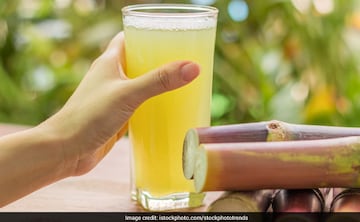For a Better Cocktail, Reach for a Different Shaker

Salt, arguably the most important ingredient in the kitchen, is just as critical at the bar.
Bartenders often add pinches of salt to cocktails to bolster flavor.
Often, the goal when making drinks at home is to, well, drink at home. It’s not to try a new technique, buy an obscure bottle you’ll use only a quarter ounce of, or wait 20-plus minutes for a cocktail — that’s what bars are for.
There is, however, one major lesson to be learned from the bar: You should be salting your cocktails.
Bartenders often add dashes of salt to cocktails for the same reason a pastry chef would never skip it in a chocolate cake batter. It just bolsters flavor.
The add is not meant to be enough to actually make a drink taste salty. Rather, “salt is a key ingredient when you’re trying to create something with depth,” said
Dorothy Elizabeth, a bar manager at Mr Lyan, a bar group with locations in London, Amsterdam, and Washington. “Sodium ions block bitter flavors, emphasize sweetness, and create really nice depth and dimension.”
Most drinks benefit from a hit of salinity, but if you’re new to seasoning your cocktails, start by adding a pinch to a drink that leans bitter, such as a Negroni.
The Negroni toes the line between sweet and bitter, and salt helps navigate that balance.
“It mellows out the taste of the Campari,” Ms. Elizabeth said. “You’re able to round out and create richer, fuller flavors without necessarily modifying anything — just through the addition of salt.”
Another drink that greatly benefits from a grain or two is one that contains fresh citrus, like the margarita.
Just as salt dampens the bitterness in a Negroni, it intensifies the palate’s ability to sense sweet and sour notes. Add it to heighten the flavors in your next sidecar, caipirinha or gimlet.
Combined with a pinch of salt, manzanilla amplifies and brightens the lime, rounds tequila’s edge and allows this margarita to go down that much more smoothly.
As for salt type, raid your kitchen. Kosher salt, fleur de sel and flaky sea salts like Maldon or Jacobsen all work well to balance and brighten without overwhelming.
Since the meaning of a pinch differs from one person — and salt — to the next, most bartenders use a low-concentration saline solution to ensure consistency. But Ms. Elizabeth leaves the dropper at work.
“If I’m making drinks at home, you better believe I’m just pinching it and putting it directly in my drink,” she said.
For Ms. Elizabeth, a pinch means a few small flakes of sea salt, no more. Keep your additions to a minimum and remember that — just as when seasoning a savory dish or offering to drive someone to the airport — once it’s out there, you can’t take it back. A small pinch is enough to shift and enhance the flavor profiles of your cocktail. Begin with restraint, and add a few flakes later if needed.
Next time you’re mixing a favorite cocktail, grab your salt dish or shaker from the kitchen and experiment with it. Divide the drink between two glasses, and add a tiny pinch of salt to one of them. Soon enough, that other shaker may find a permanent home on your bar.




